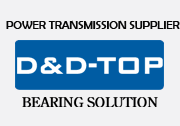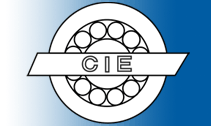|
| Correct lubrication is critical to bearing performance, reducing friction, dissipating heat and inhibiting corrosion on balls and raceways. The lubricant will affect maximum running speed and temperature, torque level, noise level and, ultimately, bearing life. Lubricants are available for a whole range of applications. Silicon lubricants have wide temperature ranges and change viscosity less with temperature. They also have good water-resistance but are unsuitable for high loads and speeds. Perfluorinated lubricants withstand temperatures of up to 300°C and are resistant to most chemicals. while certain mineral or synthetic based lubricants are designed for high speed use. Low viscosity oils and greases are used where low lubricant resistance is required but higher viscosity lubricants may be specified for high load applications. Although greases are usually thought to be stiffer than oils, many modern low torque greases can even produce similar torque figures to some of the instrument oils. |
| • Oils – maintain their consistency well over a wide temperature range and are easy to apply. For very low torque applications, a light instrument oil should be specified. Higher running speeds are possible with oil but the obvious drawback with oil is the fact that it tends not to stay in place. For anything other than very low speeds, continuous lubrication through oil mist, oil jet or oil bath is normally necessary. An exception to this is the use of a retainer (cage) that can be impregnated with oil such as the phenolic retainer. Perfluorinated oils can offer improved performance at slightly higher speeds as they don't migrate (run out) as easily. |
| • Greases – are simply oils mixed with a thickener to so that they stay inside the bearing. Greases are generally more suitable for heavy loads and have the obvious advantage of giving constant lubrication over a long period without maintenance. Finely filtered greases are used for low noise applications. Lithium based greases are multipurpose, often low torque and high speed and widely used. Polyurea thickened greases have very good water resistance and a wide temperature range while aluminium complex gives excellent resistance to water washout. Many food applications will require an edible food grade grease. PTFE thickened greases can withstand very high temperatures. Surprisingly, too much grease can be bad for a bearing. A high fill will mean greater rolling resistance (higher torque) which may not be suitable for many applications but worse still is the risk of heat build-up. The free space inside a bearing is important in allowing the heat to radiate away from contact area between balls and raceway. As a result, too much grease can lead to premature failure. The standard fill is 25% – 35% of the internal space but this may be varied if required. A smaller percentage may be specified for low torque, low load applications while a much higher fill may be advisable for a high load application provided the speed is low. |
• Dry Lubricants – are used primarily in vacuum applications or where standard lubricants are unsuitable. We use molybdenum disulfide for its hardwearing and low friction properties and the fact that it is insoluble in water and dilute acids. It is also effective within a wide temperature range of -180 to +300C. By burnishing the balls and raceways of a bearing, friction is reduced allowing higher speeds than with dry bearings.
We stock many different lubricants but for more information on our standard oils and greases, please see our LUBRICANT TABLES. |
 |
 |
|
 |


